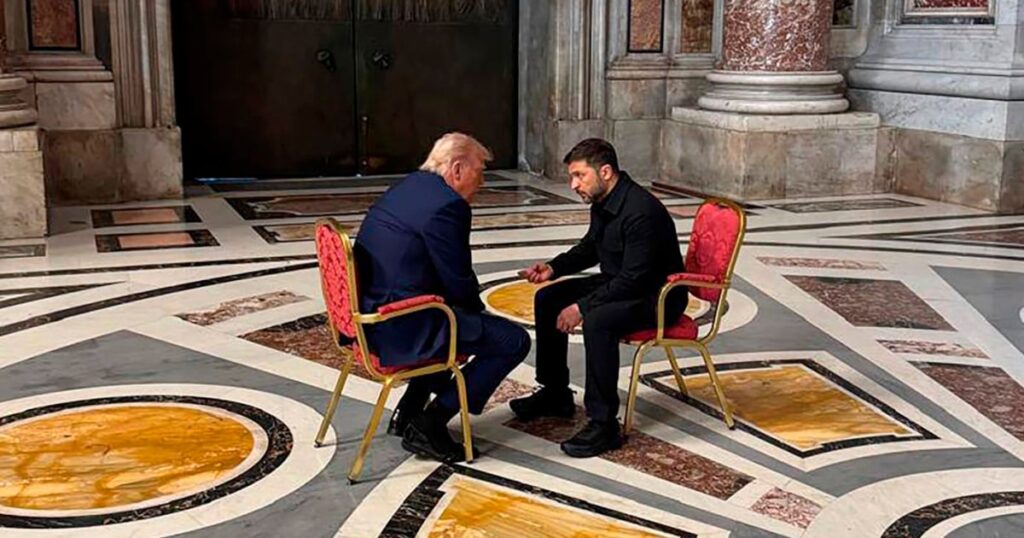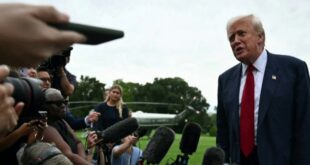

The White House announced Wednesday night that it had signed an economic partnership with Ukraine that includes an agreement on the ownership and extraction of natural resources from the war-torn nation.
Treasury Secretary Scott Bessent said the agreement, established as the United States-Ukraine Reconstruction Investment Fund, will allow the United States to “invest alongside Ukraine” to unlock its growth assets and ultimately accelerate its economic recovery.
“As the President has said, the United States is committed to helping facilitate the end of this cruel and senseless war. This agreement signals clearly to Russia that the Trump Administration is committed to a peace process centered on a free, sovereign, and prosperous Ukraine over the long term,” Bessent said in a statement. “President Trump envisioned this partnership between the American people and the Ukrainian people to show both sides’ commitment to lasting peace and prosperity in Ukraine.
“And to be clear, no state or person who financed or supplied the Russian war machine will be allowed to benefit from the reconstruction of Ukraine,” he added.
The Russian Embassy in Washington did not immediately respond to a request for comment on the deal.
Follow live politics coverage here
Yulia Svyrydenko, Ukraine’s economy minister, provided more details about the minerals deal outlined in the agreement, first saying on X that “it is the Ukrainian state that determines what and where to extract” and that “subsoil remains under Ukrainian ownership.”
Ukraine and the United States will jointly manage and maintain co-ownership of the investment fund, with neither side holding a dominant vote, Svyrydenko said. It will be financed by new Ukrainian oil, gas and critical mineral licenses, with 50% of all revenue from the licenses going toward the fund.
“The fund will then invest in extraction projects for critical materials, oil, and gas — as well as in related infrastructure and processing. Specific investment projects will be selected jointly by Ukraine and the US. Importantly, the Fund may invest exclusively in Ukraine,” she said on X.
Svyrydenko indicated in her post that the United States will also contribute to the fund, through it is unclear exactly how much. She added that contributions to the fund will not be taxed in either Ukraine or the United States to ensure “maximum effectiveness of the investment process.”
Trump said earlier Wednesday that the agreement would serve as an avenue for the United States to recoup funds it has provided to Ukraine throughout its war with Russia, a figure the State Department has placed at $66.5 billion in terms of military assistance.
“I didn’t want to make a complicated deal,” Trump said at a Cabinet meeting Wednesday. “Rare earth is called rare for a reason, and they have a lot, and we made a deal where our money is secure, where we can start digging and doing what we have to do.”
It is unclear how much of the money will go toward repaying the United States. Svyrydenko said in her post that the agreement “includes no provisions regarding any Ukrainian debt obligations to the United States.”
The agreement was signed days after Trump met with Ukrainian President Volodymyr Zelenskyy in Rome on the sidelines of Pope Francis’ funeral. Trump suggested the pair’s relationship had improved since their Oval Office clash in February, characterizing the meeting as “beautiful” and expressing confidence that Zelenskyy “wants to make a deal” to end the war.
Trump’s ire was instead directed at Russian President Vladimir Putin, whom Trump criticized for carrying out widespread strikes on Kyiv despite U.S. officials’ ongoing effort to secure a plan to end the war, which began in February 2022.
Putin met with U.S. special envoy Steve Witkoff on Friday for roughly three hours in Moscow, with a Putin aide later describing their discussion as “productive.”
After the meeting, Trump urged Ukraine and Russia to hold “very high-level” ceasefire talks, adding that the two sides are “very close to a deal” to end the war. The two countries have not held direct talks since the early days of Russia’s invasion.
 Latest World Breaking News Online News Portal
Latest World Breaking News Online News Portal






